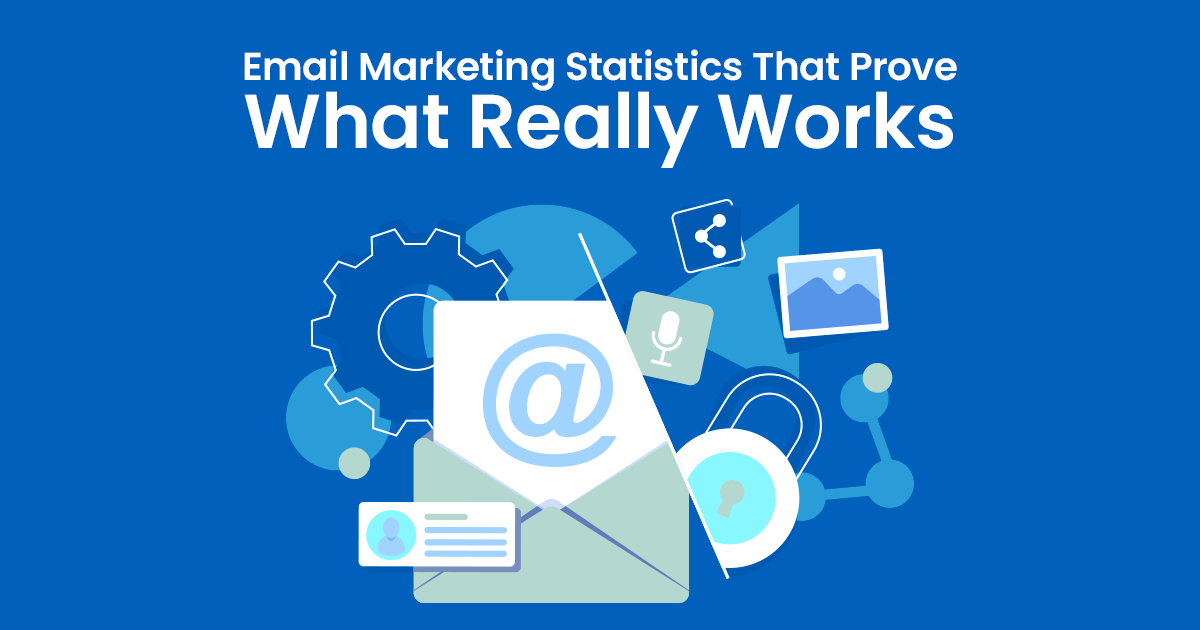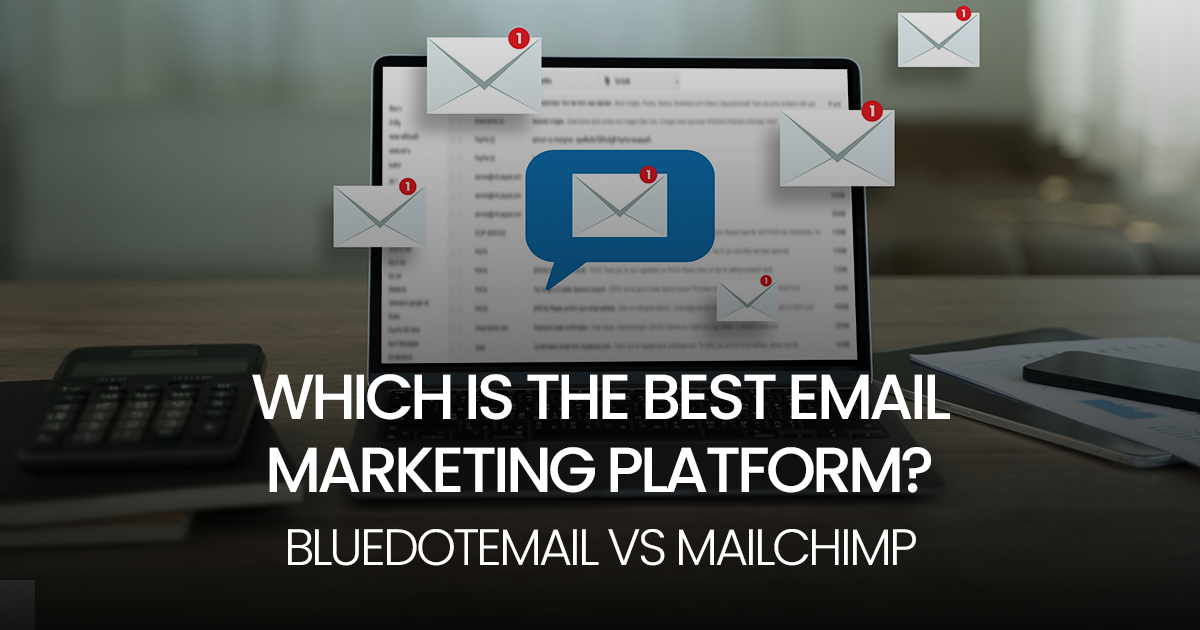Email marketing continues to be one of the most powerful and effective digital marketing channels. With billions of users worldwide, the reach and potential impact of email marketing remains unmatched. Businesses of all sizes rely on email to connect with their audiences, drive engagement, and ultimately, boost revenue. Below, we explore the latest statistics that highlight the significance of email marketing, its return on investment, and best practices for success.
General Email Marketing Statistics
Email remains an essential communication tool, with usage expected to grow significantly in the coming years. In 2025, the number of email users is expected to reach 4.6 billion, and by 2026, the number of email users is projected to reach 4.73 billion, reinforcing email’s dominance in digital communication. With more than 347 billion emails sent and received daily, it’s clear that email is deeply ingrained in how we interact online.
The financial impact of email marketing is substantial, with worldwide revenue expected to reach $17.9 billion by 2027. Despite the rise of social media, 4 out of 5 marketers say they would rather give up social media marketing than email marketing, illustrating email’s effectiveness in driving business results. However, only 31% of marketers currently use email marketing, highlighting an opportunity for growth.

Different generations interact with email in unique ways, with Millennials and Gen Xers relying on email more than any other generation, at 98%. Additionally, 37% of individuals have two email accounts, demonstrating the need for businesses to optimize their messaging across multiple touchpoints. When opening emails, 63% of recipients look for discounts, emphasizing the importance of strategic promotions. Furthermore, 99% of users check their inbox daily, making email an ideal channel for regular engagement.
Statistics on Email Marketing ROI and Effectiveness
The return on investment (ROI) for email marketing is among the highest of all digital marketing channels. For every dollar spent on email marketing, businesses can expect an ROI of approximately $42, with an overall ROI of 4,200%. These impressive figures make email marketing a must-have for businesses looking to maximize their marketing budget. Additionally, the median email marketing ROI is 122%, which is four times higher than any other digital marketing channel. Notably, 18% of companies achieve an email marketing ROI greater than $70 per $1 invested.

Beyond ROI, email marketing directly influences purchasing behavior, with 60% of consumers reporting they have made a purchase as a result of a promotional email. Additionally, 59% of respondents say marketing emails influence their purchase decisions, and 80% of business professionals believe that email marketing increases customer retention. Consumers who purchase products through email spend 138% more than those who don’t receive email offers. Automated emails, which allow businesses to reach customers at the right moment, generate 320% more revenue than non-automated emails. Moreover, email is 40x more effective than social media for customer acquisition, and 4.24% of email traffic leads to purchases, compared to only 2.49% of search traffic and 0.59% of social traffic.
Email marketing is widely regarded as a highly effective digital marketing channel, In Statista report, 73% of company respondents and 75% of agency respondents rated email marketing as an excellent digital marketing channel for ROI.
Personalization and segmentation are crucial in optimizing email marketing success. When businesses personalize emails, revenue can increase by up to 760%. Additionally, 51% of marketers believe that segmentation is one of the most effective email strategies. The most successful email campaigns leverage segmentation (78%), message personalization (72%), and automation (71%). Furthermore, 63% of all businesses will reduce their level of emails based on consumer engagement, emphasizing the need for tailored communication strategies.
Testing and optimization also play key roles in improving email performance. A/B testing can increase email marketing ROI by 83%. Meanwhile, businesses that test their emails see a higher overall ROI. Meanwhile, businesses that test their emails see a higher overall ROI. Additionally, emails that include image offers see a 10% boost in open rates. Some of the highest average open rates occur in emails mentioning hobbies, the government, or the arts. Despite these best practices, 59% of Americans believe that most of their emails aren’t useful to them, highlighting the need for relevance in email content.

Gmail is the most popular email client, used by 27.8% of people, followed closely by Apple iPhone at 27.6%. The global value of email marketing continues to grow, from $7.5 billion in 2020 to a projected $17.9 billion by 2027. Out of marketers, 87% plan to invest more capital in their email marketing budget. Additionally, 87% of brands state that email marketing contributes to their business success, and a survey from eMarketer reveals that email marketing drives 25% of the overall revenues for companies surveyed.
Statistics on Email Subject Lines
An email’s subject line can make or break its success. Nearly half of people open emails based on the subject line alone. However, 69% of individuals mark emails as spam due to the subject line, demonstrating the fine balance needed to capture attention without being perceived as intrusive.

Recognizing the sender is the most important factor, with 47% of individuals looking at the sender before deciding to open an email. Emails that end up being the most successful include promotional offers, promote curiosity, and are personalized to each person’s preferences.
Certain elements boost open rates significantly. For example, subject lines with emojis increase open rates by 56% compared to text-only subject lines. The word “video” in a subject line increases the open rate by 19% and the click-through rate by 65% while reducing unsubscribes by 26%. Additionally, urgency in subject lines increases the open rate by an average of 22%. Lastly, the average subject line length is 43.85 characters, reinforcing the need for concise messaging.
The average open rate worldwide is approximately 27%, and mobile devices account for nearly 60% of all email opens. Fridays have the highest open rate of just under 19%, and 22% of all email marketing campaigns are opened within the first hour of them being sent.
Including the word “free” in the subject line makes emails 10% more successful in being opened. Additionally, 75% of marketers believe that personalized email campaigns result in higher click-through rates. 45% of marketers use automation for A/B testing, which helps optimize subject lines for engagement.
Consumers are highly receptive to discounts, with 63% opening emails that include them, and 49% preferring to receive promotional emails from their favorite brands weekly. Companies that send two emails a month tend to see a higher open rate.
Personalization is another key factor, with personalized emails achieving an open rate of 22.63%. Meanwhile, welcome emails have the highest open rate at 50%. Mobile optimization also plays a role, as the iPhone email app only displays the first 30 characters of a subject line, reinforcing the need for concise messaging.
Mobile Email Statistics
With mobile usage continuing to grow, optimizing emails for mobile devices is more important than ever. Currently, 55% of emails are opened on mobile devices, and about 41% of people view their emails primarily from their mobile phones. The iPhone email app has the highest market share, with the Gmail app taking second place.
About 3 in 5 consumers check their email on the go, and 75% say they use their smartphones most often to check email. However, nearly 1 in 5 email marketing campaigns are not optimized for mobile devices, leading to lost engagement.
A poor mobile experience can result in lost opportunities, as 42% of users delete emails that are not properly formatted for mobile screens. Despite this, 23% of consumers check an email on their mobile device and then revisit it later on another device, emphasizing the need for a seamless experience across platforms.
B2B Email Marketing Statistics
For B2B marketers, email remains an essential channel. A staggering 71% of B2B marketers use email newsletters as their main form of content marketing. Additionally, 77% of B2B buyers prefer to be contacted via email, reinforcing its effectiveness in professional settings. However, 67% of B2B buyers and consumers set up a separate junk email to avoid unwanted emails.
Engagement metrics also support email’s role in B2B marketing. On average, B2B emails have an open rate of 15.1%, and they boast a 23% higher click-to-open ratio compared to B2C emails. Moreover, new product announcement emails generate the highest click-through rates for B2B marketers.
Companies investing in mobile-responsive email design see a 15% increase in mobile clicks, further proving the importance of optimizing B2B emails for all devices. With 32.55% being the average open rate for email marketing across all industries as of August 2024, businesses that refine their email strategies stand to gain a competitive advantage.
Turning Insights into Results
Email marketing continues to be a powerful tool for businesses, offering unmatched ROI, effectiveness, and engagement. With the number of email users increasing and consumer behaviors shifting toward mobile and personalized experiences, companies that invest in optimizing their email marketing strategies will see significant results. Whether for B2B or B2C, email remains a cornerstone of digital marketing success.
For more insights and to enhance your email marketing strategy, visit BlueDot Email.





